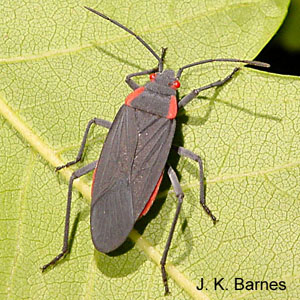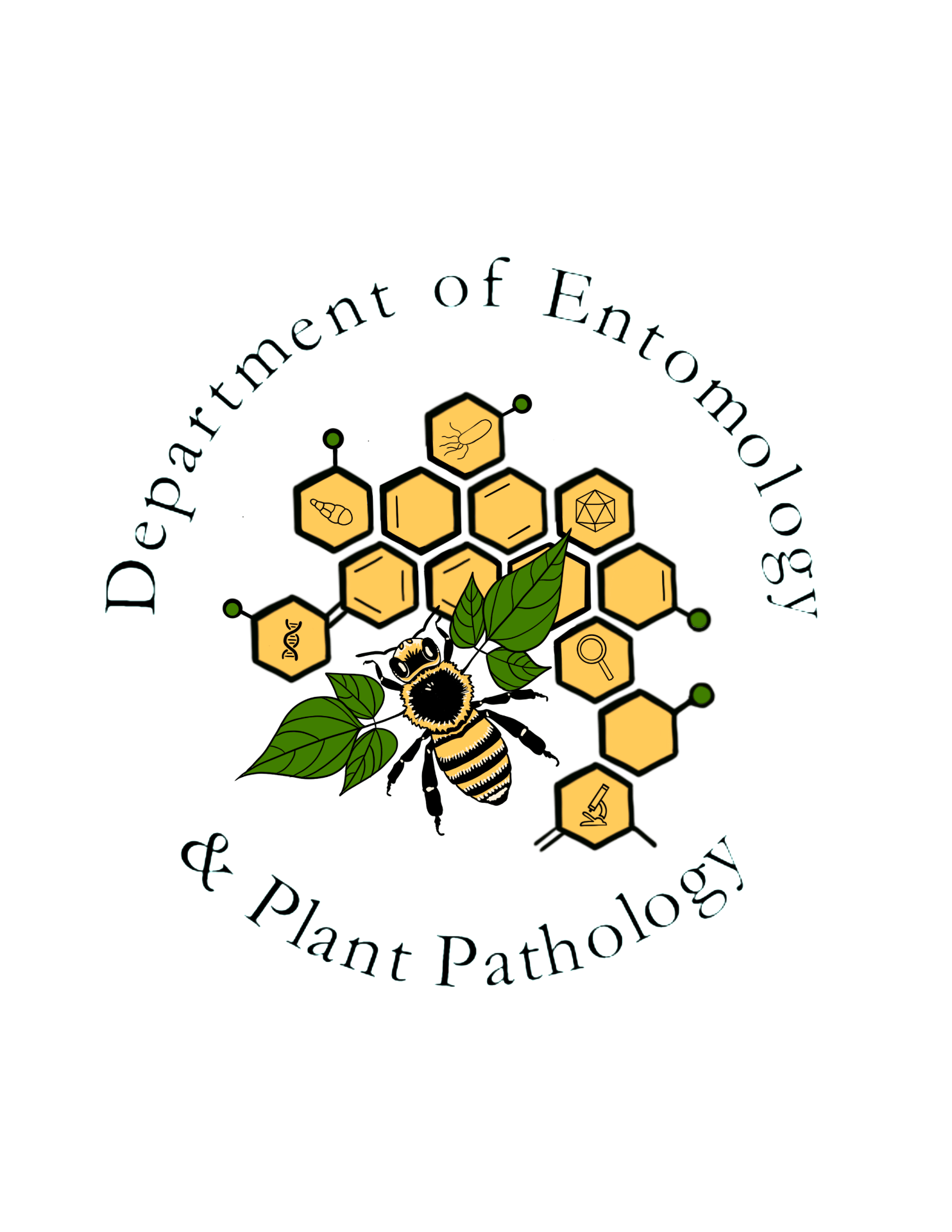Golden raintree bug
Order: Hemiptera: Heteroptera
Family: Rhopalidae
Genus and species: Jadera haematoloma (Herrich-Schaeffer)

Jadera haematoloma has no common name officially sanctioned by the Entomological Society of America. In the entomological literature, it is often referred to as the golden raintree bug or redshouldered bug. In the ecological and evolutionary literature, it is usually called the soapberry bug. The bug is mainly black, but it has striking red eyes and “shoulders” (actually, the edges of the pronotum). The dorsum of the abdomen also is bright red, but most of it is covered by the wings, except in the short-winged, or brachypterus, individuals. Adults may also be of one of several long-winged forms with varying degrees of muscle histolysis. The species has a Nearctic and Neotropical distribution, ranging across the southern United States from Florida to southern California and south to sub-Amazonian South America.
Golden raintree bugs amass on or near host plants and buildings and may enter homes in the fall, while searching for a place to spend the winter. They are a nuisance, but they are not dangerous and they cause little damage, except some staining when crushed. They spend most of the growing season sucking juices from developing seeds of host plants. Native hosts of this New World bug are three native plant species the soapberry family Sapindaceae. The soapberry tree, Sapindus drummondii, occurs in the southcentral United States and is widespread in western Arkansas; the serjania vine, Serjania brachycarpa, occurs in the southern Texas; and the balloon vine, Cardiospermum corindum, occurs in southern Florida. The bug is now commonly associated with three recently introduced soapberries, especially the round-podded golden raintree, Koelreuteria paniculata, a native of East Asia that is widely planted in the South for horticultural purposes. It also feeds on the southeast Asian flat-podded golden raintree, K. elegans, in Florida, and the heartseed vine, C. halicacabum, in Louisiana, Mississippi, and eastern Arkansas. It has been reported feeding on Ficus (fig) and Althaea (Rose of Sharon), but the bugs, which closely resemble the boxelder bug, may have been misidentified in these cases.
The bugs have colonized introduced plants in and near the range of the native host plants. The round-podded golden raintree has been present in the United States at least since 1880, but it was not widely planted until the middle of the Twentieth Century. All stages in the life cycle feed on the host plants, and adult females feed more frequently than the smaller males. Males and nymphs feed on seeds in capsules that have opened prior to wind-dispersal, seeds in damaged fruits, and seeds that have fallen to the ground. The bugs aggregate densely on and around seed-bearing host plants.

Rapid adaptive evolution and development of allopatric host races followed the colonization of the introduced soapberries. The new host species each have fruits that differ in size from the native hosts. With their needle-like beaks, the bugs reach through the papery covering of the inflated capsule, pierce the seeds, liquefy the seed contents, and suck up the resulting broth. Depending the host species, seeds are located at varying distances from the fruit perimeter. Beak length has increased or decreased according to the fruit size of each introduced host. Differences in host chemistry also have led to genetically enhanced abilities to flourish on introduced hosts.
This species winters in the adult stage in plant debris and in homes. Females deposit eggs in the ground near host plants in the spring. Eggs hatch in about two weeks, and the nymphs begin to feed and grow. Adult females appear in July and lay eggs that produce the second, wintering generation.
